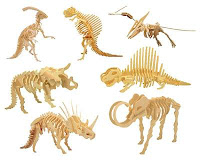When I arrived I was in awe of what they had set up. Light tables, vinyl cutter, a Dewalt filled shop, and the highlight for me- a laser cutter! I've been pining over the idea of a laser cutter for a while now, ever since I toured school in Sherwood Park with David Hay.
At Ecole Voyageur the Phys Ed and CTS teacher is Marc Hamel. He is actually a former colleague from my school division but he has a great teaching position at this school now! We talked about CTS instruction and evaluation, how CTS is largely performance/skills based. It is difficult to give a student a 73% on their wood shop project. We also talked about how CTS is unique in this area because a student often gets to see right away if they have done something 'wrong' in a physical way and feedback is immediate. I think true learning happens from this type of project based environment.
Without a doubt, the coolest technology I saw there was a Epilog 35W laser/engraver. The machine has an 18x24" bed which can do a lot of work in a school or business. Marc showed me how etching a design into a material is as easy as printing a piece of paper. The laser can do vector cutting, which is cutting through a material to make a shape, and raster cutting/etching, which is taking away parts of the material to leave a design behind, which can be at different depths and can be different shades. The name plate seen above was made with the machine! Marc uses Corel Draw to import graphics from a library, adds text and then literally clicks 'print'. A printer driver pops up with speed and power options to select. Once these are selected the job is sent to the laser and stored in the internal memory. Marc showed me how to focus the laser just above the wood we were using, then he sent the laser 'home' and clicked 'Go'. Here is my design being cut out.
The image is a shrimp bowl with my name. It turned out awesome! I'm impressed with the detail and precision that the laser gives to the final product. The machine can cut and engrave dozens of materials. While there we also cut ovals through 1/4" cedar which were so sharp and smelled great! I love the smell of burning wood!
My mind has been racing with ideas for projects after this visit. Marc shared the work his students are doing and how he makes products for people in the community, like puzzles for elderly in the lodge who are working on dexterity and memory, and custom cheese boards.
Some ideas that I have for projects would require digital work to produce physical things:
- chess board in the laser cutter, and chess pieces in Google Sketchup to our Makerbot.
- dinosaur bones puzzles
- puzzles
- signage around the school
- game design and re-design (another post of this to come).
- coasters
- engraving iPods, iPads, iPhones and other electronics
- custom boxes
- trophies and plaques for school awards and sports teams
- acrylic signage
- glassware for parent thank you's
- design projects that require multiple prototypes
What a great find in my own community! Thanks to Marc for all his time and valuable discussions. I'm drooling over what an addition like this to our school could do for a multimedia program. It would bring my vision of "maker spaces" one step closer. Giving students more choice and control of the products they produce, and allowing them to rapidly turn ideas into physical prototypes for changing and evaluating. This machine would open up so many opportunities for our students!








